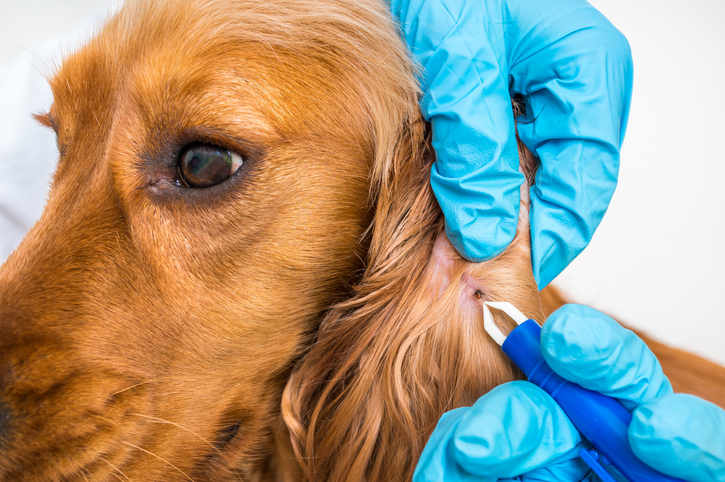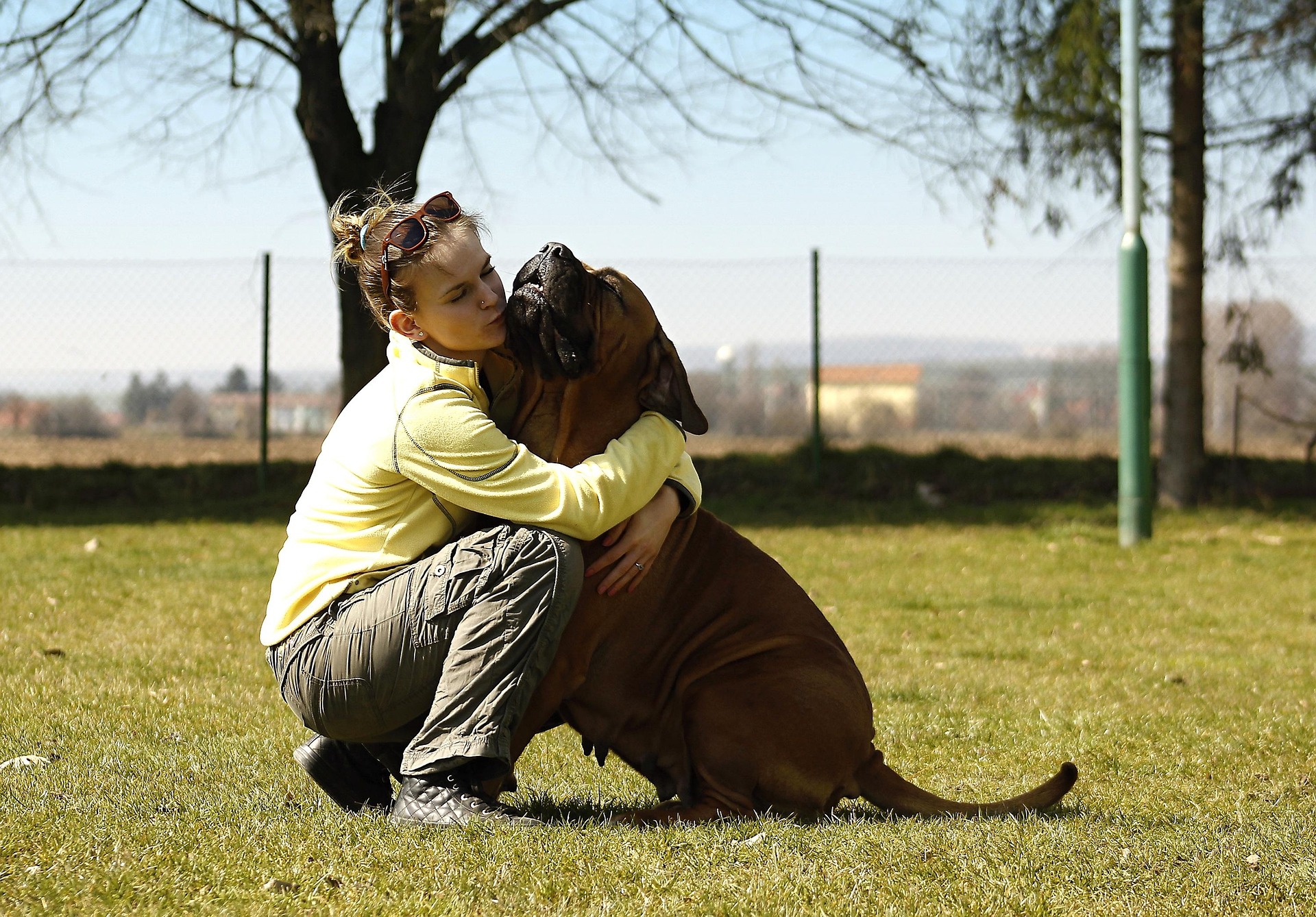Of all the human treats we can’t feed our dogs, few are as well-known as chocolate. Most people know that chocolate isn’t safe for dogs to snack on, but it’s worth understanding why it’s such a serious hazard. In this guide, we dive deep into the facts of why chocolate and dogs don’t mix, helping you to understand why this delicious confectionary is actually a major health risk for your pup.
Why Is Chocolate Bad for Dogs?
When we humans eat chocolate, we don’t have to worry too much about immediate effects on our health—aside from concerns about overindulgence, of course. However, the story is very different when it comes to dogs. There are two substances in chocolate that, while less impactful to humans, are quite hazardous to dogs: theobromine and caffeine. These two chemicals have almost identical structures, and they even belong to the same chemical group: methylxanthines. So why do these chemicals harm dogs, but do almost nothing to affect humans? One part of the answer is in the way dogs metabolize these substances.
Dogs process methylxanthines, especially theobromine, very, very slowly. Dogs reach peak levels of caffeine in the blood about 30 to 60 minutes after eating chocolate, and half of the dose is eliminated in about 4.5 hours. This is known as the half-life of the chemical, or the amount of time it takes for half the dose to be metabolized and eliminated. However, it takes dogs about 10 hours to reach peak theobromine levels after ingesting, and it has a half-life of 17.5 hours in your dog’s body. Humans, on the other hand, can process theobromine far more quickly—it has a half-life of just 2 to 3 hours in your body.
This means that for 17.5 hours, your dog is getting the full effects of theobromine in their body. This and other methylxanthines have a few adverse effects on dogs, but the most notable is the inhibition of adenosine receptors. When these receptors are activated normally, it causes your dog to get sleepy and decrease its body activity. But when methylxanthines are inhibiting these receptors, it has the opposite effect, acting as a stimulant in your dog’s system.
There are other common, hazardous effects of theobromine in dogs, including:
- Nausea
- Vomiting
- High heart rate
- Diarrhea
- Hyperactivity
If your dog manages to consume a very high dose of methylxanthines, it can cause very serious health effects, including tremors, seizures, or even death. So, what exactly is a high dose of theobromine or caffeine for a dog? Can they eat any amount of these substances safely?
Dosage and Dogs
Despite our best efforts, our mischievous pups can sometimes get into treats that aren’t meant for them. Perhaps you left a slice of chocolate cake or a piece of a chocolate muffin unguarded and you couldn’t stop your dog in time before they scarfed it down. You may have been ready for the worst, only to discover that your dog was more or less fine. So what gives? Is chocolate really as bad for dogs as they say? The answer to this question comes down to dosage.
The dosage of hazardous substances in dogs is classified in milligrams of the substance compared to one kilogram of your dog’s body weight, or ‘mg/kg’ for short. So, to determine what dosage of methylxanthines your dog ingested, you’ll need to know how much they weigh and to know approximately how much caffeine and theobromine are in whatever they ate. Here are the approximate dosage thresholds to be aware of, and the common effects you’re likely to notice. Please note that all doses listed below require veterinary medical care:
- 20 mg/kg: Causes mild theobromine toxicosis (poisoning), with symptoms such as vomiting, diarrhea, polydipsia (excessive thirst), and restlessness.
- 40 mg/kg: Causes severe symptoms, including hyperactivity, polyuria (excessive, diluted urination), ataxia (poor coordination when moving), body rigidity, and tremors.
- 60 mg/kg: Can cause seizures, tachycardia (rapid resting heart rate), hyperventilation, hyperthermia (overheating), or cyanosis (blue discolouration of the skin).
- 100-200 mg/kg: The median lethal dose of methylxanthines, potentially causing late-stage toxicosis with effects like coma, hypokalemia (low potassium ion levels in the blood), cardiac arrhythmias (irregular heartbeats), respiratory failure, and death.
Notice that these dosages are labelled as milligrams per kilogram. This is because the size of the dog determines the effects of ingesting methylxanthines. A large, 50kg mastiff will be able to handle far more methylxanthines than, say, a 6kg shih tzu—in other words, a dosage that will cause mild discomfort in a large dog could be enough to cause severe toxicosis in a small one.
How Much Methylxanthine Is In Chocolate?
When it comes to hazardous methylxanthines, not all chocolate is created equally. The darker the chocolate, the more of these chemicals are present, meaning that white chocolate is free from methylxanthine and mostly harmless (aside from all the fat and sugar), while dark chocolate, cooking chocolate, and 100% cocoa powder are full of methylxanthines, and thus very hazardous to dogs. Here’s a quick breakdown of common chocolate products and their levels of theobromine and caffeine:
- White Chocolate (100g): Approximate theobromine amount is 0mg; approximate caffeine amount is 0mg.
- Milk Chocolate (100g): Approximate theobromine amount is 175mg; approximate caffeine amount is 20mg.
- 75% Dark Chocolate (100g): Approximate theobromine amount is 1000mg; approximate caffeine amount is 60mg.
- 100% Pure Dark Chocolate (100g): Approximate theobromine amount is 1355mg; approximate caffeine amount is 85mg.
What to Do If Your Dog Eats Chocolate
This is a lot of information to keep in mind if you ever realize that your dog has managed to sneak into something chocolatey, so here are the main takeaways to keep in mind in order to keep your pup safe.
The main thing is to know your dog’s approximate weight. If you know how much they weigh in kilograms, you’ll be able to find out the amount of methylxanthines ingested in mg/kg, which can help you know how severe the chocolate poisoning may be. We recommend familiarizing yourself with methylxanthine doses by using a dog chocolate calculator before anything happens. This will prepare you in case your dog does end up eating some chocolate.
If your dog has eaten chocolate, here are the steps to follow:
- Find out how much chocolate your dog has eaten, if possible, to determine the mg/kg of methylxanthines ingested. If you’re not sure about dosages, use a chocolate calculator or call animal poison control at 1-888-426-4435 in Canada.
- If you are certain that the amount of chocolate was small for your dog’s size, monitor them closely for any symptoms of chocolate poisoning (vomiting, diarrhea, fast heart rate, or tremors).
- If you notice any symptoms of chocolate toxicosis (even mild ones), if you’re not sure how much chocolate your dog ate, if your dog has other health issues, or if your dog is pregnant (theobromine can affect unborn puppies), take them to a veterinarian immediately.
How Is Chocolate Toxicosis Treated at the Vet?
Your vet will know what to do when you bring your dog in after they’ve eaten chocolate. If you know how much and what kind of chocolate they ate, be sure to tell the vet. Depending on the situation, they will have several options for treatment.
Hopefully, this guide sheds some light on the sometimes-misunderstood facts about chocolate and its effects on dogs. Remember that, even though large dogs can tolerate some chocolate, it’s still always bad for their health, and should never be given to dogs regardless of their size.
Creative Commons Attribution: Permission is granted to repost this article in its entirety with credit to Hastings Veterinary Hospital and a clickable link back to this page.






